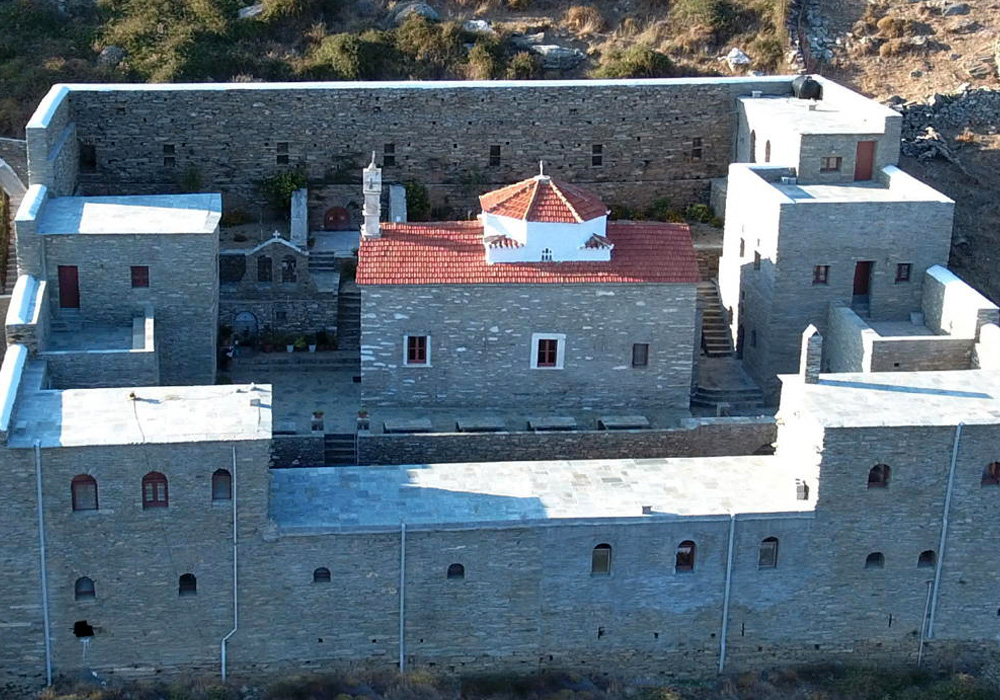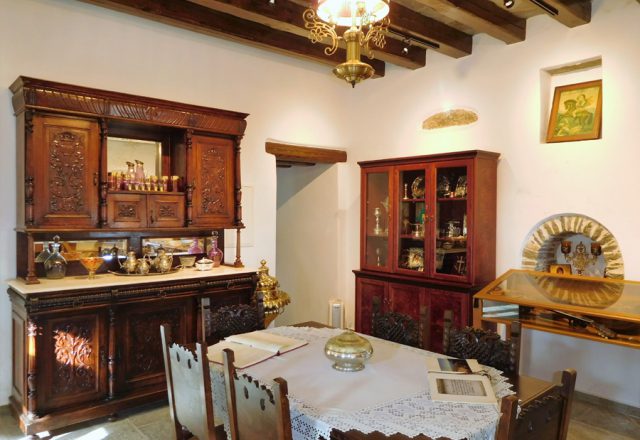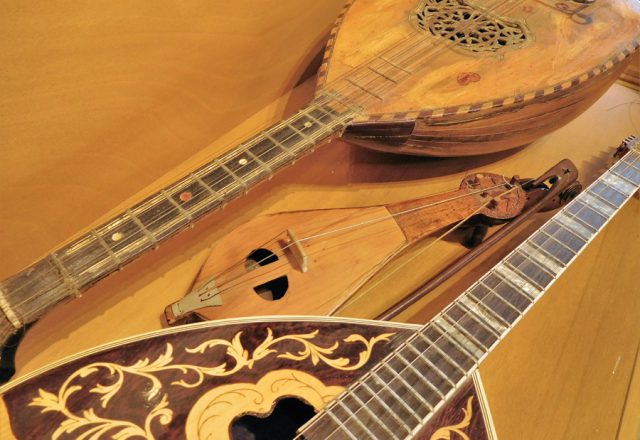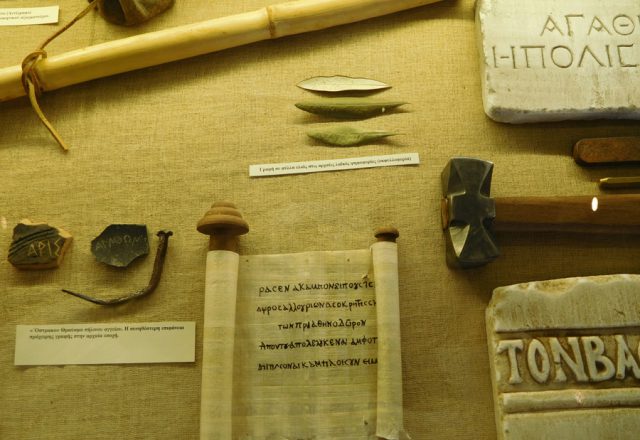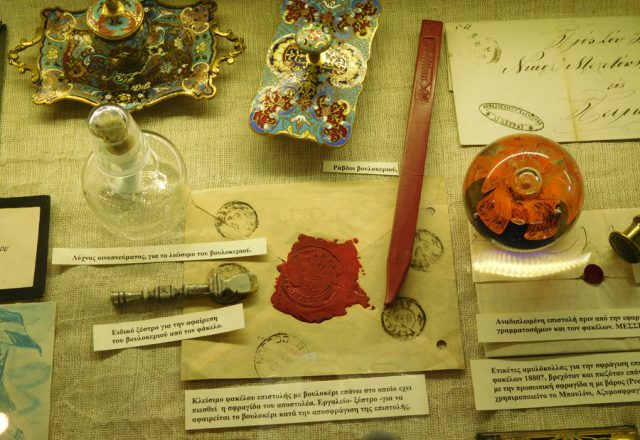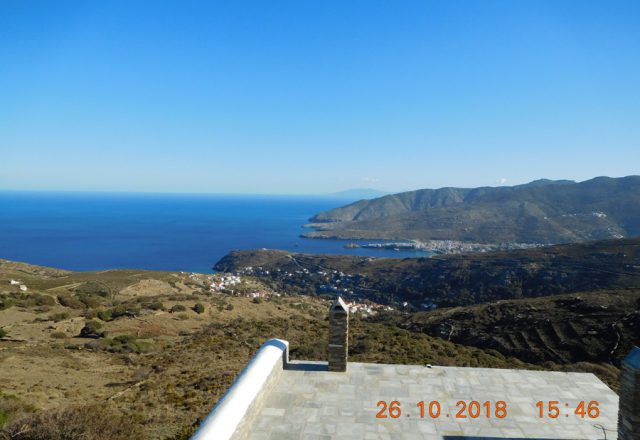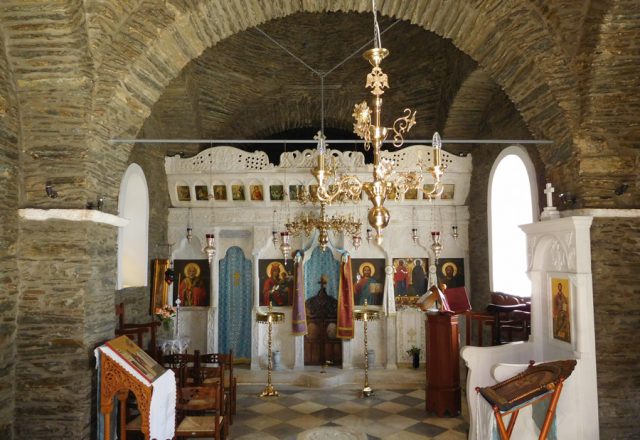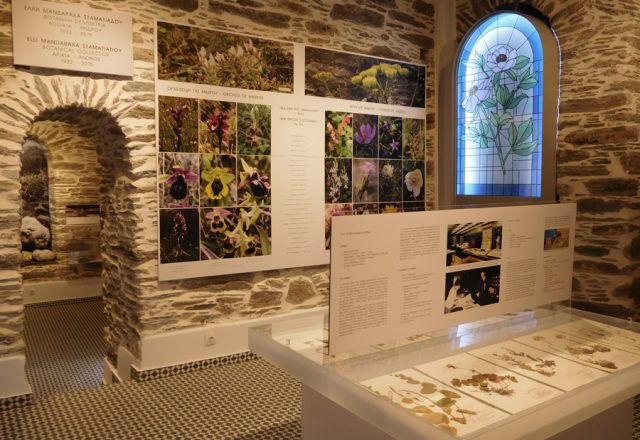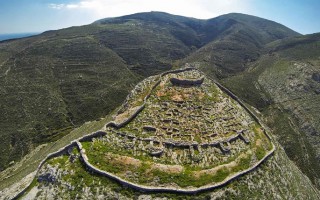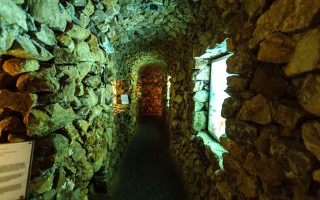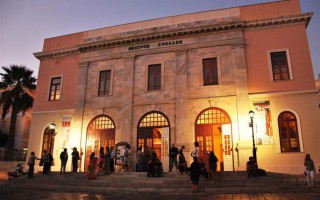The monastery of Saint Irene was founded in 1780 at Archontas in the village of Apoikia by the Spiridou brothers, both of whom were monks.
At that time it was a nunnery, but in 1833 it was abandoned, due to King Otto’s Royal Degree which demanded the dissolution of the orthodox monasteries, which numbered about 1000 in Greece, with a smalls number of monks or nuns and the confiscation of their properties. Gradually, the buildings around the church collapsed, although the church remained in good condition.
In 2006, Captain Eleftherios Polemis bought the field which included the ruins of the monastery. He and his family renovated the buildings around the church and did maintenance work inside the church, remaining true to the previous architectural form. The renovation took 10 years to be carried out.
Nowadays, the monastery plays a big role in the community. It holds summer camps for children, many of whom are orphans. Furthermore, throughout the whole year it houses the following exhibitions:
- History of writing (Kairis Collection)
- Traditional musical instruments
- Collection of stones, minerals & fossils (Spiros Mpellas collection)
- Elli Mandaraka – Stamatiadou & Flora of Andros
The church (dome basilica) is well worth viewing: it is made from slate with arches, the dome is based on trianglur spheres and the walls are built of traditional stone. Especially notable are the floor with an eagle and the marble ‘iconostasis’ with its flower decoration, dating from 1806.
The museums should be visited and there is a wonderful view of the city of Andros and the coastline with the sea from the Monastery.
The Monastery is open every day from 10:00 – 17:00, including Sundays and celebration days.
Telephone number: 6982038281
For more information, you can find us www.imagiasirinisandrou.gr
E-Mail: imagiaseirinisandrou@gmail.com
Got from: Holy Monastery of Saint Irene
διαβάστε περισσότεραAgia Paraskevi was built in 1600 in Alithini and belongs to the shipowner Athanasio Martino. This is a private church with a dome built in Byzantine style that was reconstructed and expanded in 1873.
Located in a perfect location the church offers magnificent views to the island’s harbor as well as the Cyclades. Under the church there is a smaller Temple, the temple of all Saints hosting the bones of victims from the ship that was lost in the fire of 1876. Agia Paraskevi is commemorated on July the 26th with a spectacular feast.
Source: www.syrosisland.gr
Agia Thekla is a beautiful catholic church in the region of Megas Gialos standing out for its curved walls, the exterior tower and courtyard.
Source: www.syrosisland.gr
The first Church of St. Athanasios was built in 1631 but has since suffered several destructions and after being rebuilt again and again it is now standing impressively in a ravine, surrounded by platans and running spring water on the backside of Ano Syros. It is a beautiful stone church with a stone belfry adorning the idyllic landscape.
Source: www.syrosisland.gr
The Church of Agioi Anargyroi is situated in the district of Mana, on the road connecting Ermoupoli with the surrounding areas. It is a cruciform church of Byzantine style with a dome and a large courtyard adorning the area since 1862.
Source: www.syrosisland.gr
The orthodox church of Agios Antonios is situated by the seaside, in the region of Megas Gialos. It is distinguished for its unique cruciform domed architecture and the simple hagiography in the interior. A feast is organized on January the 17th in honor of the Saint, where guests are offered soup and wine.
Source: www.syrosisland.gr
 Agios Georgios was built in 1839 in the region of Syros, originally as a one-aisled church while after the successive disasters it suffered, the church was reconstructed in the early 20th century as a three-aisled Basilica with the addition of the chapels of Agia Thekla and Agios Andreas. At the entrance of the church’s courtyard lies the imposing marble Bell Tower while the temple’s central arch is adorned with an inscription mentioning the date of completion of the temple, the patron and donors.
Agios Georgios was built in 1839 in the region of Syros, originally as a one-aisled church while after the successive disasters it suffered, the church was reconstructed in the early 20th century as a three-aisled Basilica with the addition of the chapels of Agia Thekla and Agios Andreas. At the entrance of the church’s courtyard lies the imposing marble Bell Tower while the temple’s central arch is adorned with an inscription mentioning the date of completion of the temple, the patron and donors.
Within the temple the icons that have been painted by D. Kostarakis, F. Desipris and Emm. Psaltidis also stand out while next to the temple one can find the Orthodox cemetery of Syros. The hieratic school of Syros also used to operate in the Western side of the temple.
Source: www.syrosisland.gr
On May 25th of 1936 Manousos Pelekis from Ermoupoli had a vision which led him to the icon of Saint Demetrios. After the command of the Metropolitan of Syros at the time, Filaretos a magnificent stone church of Byzantine style with a dome was built in the exact place where the icon was found, a church greeting the ships that arrived. The Temple stands out for the stone walls on the inside as well as the few icons that adorn them. Ships arriving or leaving the port of Ermoupolis whistle just as they pass from St. Demetrios while the priest of the temple, greets them back by ringing the bells.
Source: www.syrosisland.gr
St. John was built in 1876 at the center of Poseidonia with the donations of George Veltsos, Themistocles Petrokokkinos as well as various precious sacred relics and icons of the 19th century sent by Zanis Petrokokkinos from St. Petersburg. It is a church of Byzantine style with a dome and cruciform painted in the colors of the Greek blue sea and the azure sky. In the elder years, on August the 29th visitors used to camp around the temple, light up the beach with lights that were placed on the boats and mansions in honor of the Saint. The celebration continued with live music, dancing and singing and the procession of Saint John with the accompaniment of music, a custom still celebrated to the day.
Source: www.syrosisland.gr
The Church of St. Nicholas is a magnificent Byzantine Church near Miaouli square that began to be manufactured in 1848 according to the designs of G. Metaxas and the consent of King Otto. The church was finally completed in 1870.
 Saint Nicholas, patron saint of Ermoupoli stands out for its lavish interiors and impressive architectural structure, the icon of St. Nicholas that was silver-plated in Moscow, the despotic marble throne, the pulpit and the marble iconostasis that was designed by George Vitali. This is a two-storied monumental temple with marble bell towers, an imposing marble staircase and marble propylaeums, ionic columns, archaic motifs, arcades, sculptured decorations, grey-blue slates and a unique iconostasis definitely worth seeing. The church’s icons were created by some of the best hagiographers of the time while many Greeks from abroad as well as ship-owners helped for the construction of the temple.
Saint Nicholas, patron saint of Ermoupoli stands out for its lavish interiors and impressive architectural structure, the icon of St. Nicholas that was silver-plated in Moscow, the despotic marble throne, the pulpit and the marble iconostasis that was designed by George Vitali. This is a two-storied monumental temple with marble bell towers, an imposing marble staircase and marble propylaeums, ionic columns, archaic motifs, arcades, sculptured decorations, grey-blue slates and a unique iconostasis definitely worth seeing. The church’s icons were created by some of the best hagiographers of the time while many Greeks from abroad as well as ship-owners helped for the construction of the temple.
Source: www.syrosisland.gr
- 1
- 2

